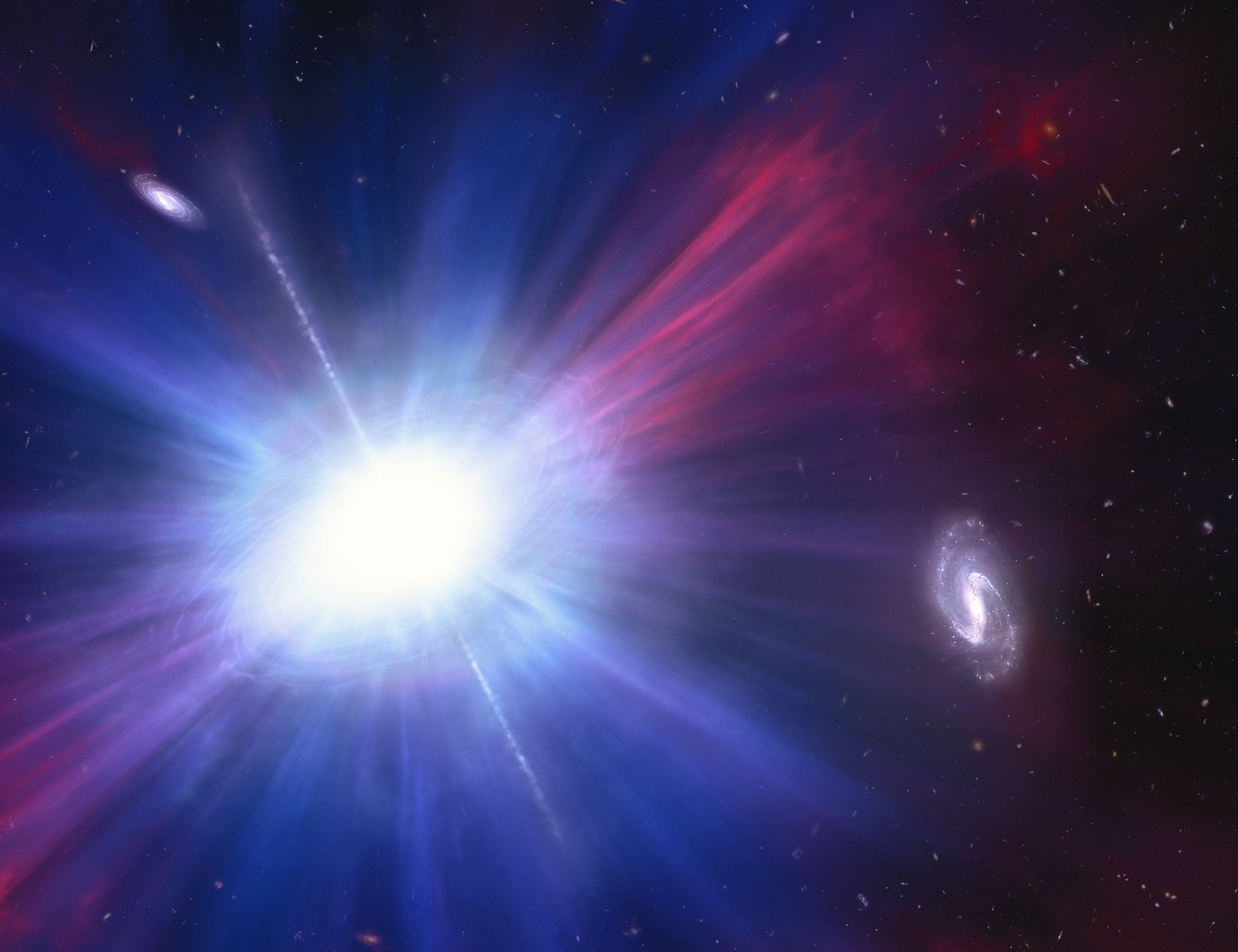Maunakea, Hawai‘i – Astronomers are baffled by a series of strange, extremely bright repetitive flares that lasted for months – the first phenomenon of its kind ever seen. This mysterious and rare event is consistent with a Luminous Fast Blue Optical Transient (LFBOT).
Typically, LFBOTs explode once and fade within a few days. However, this particular LFBOT, named AT2022tsd and nicknamed the “Tasmanian Devil,” continued to produce short-duration bursts far longer than scientists expected, emitting more energy than hundreds of billions of stars like our Sun combined.
The discovery of this unique phenomenon, which appears to be a distant star that died and repeatedly revived, is published in the journal Nature. A global team of scientists conducted the research using multiple telescopes, including W. M. Keck Observatory on Maunakea, Hawaiʻi Island.
“No one really knew what to say. We had never seen anything like that before – something so fast, and the brightness as strong as the original explosion months later – in any supernova or LFBOT. We’d never seen that, period, in astronomy,” says Anna Y. Q. Ho, assistant professor of astronomy at Cornell University and lead author of the study.
The research team first detected the LFBOT using the Zwicky Transient Facility at Palomar Observatory in California, using software Ho wrote. To investigate further, 14 other telescopes around the world conducted follow-up observations, confirming at least 14 irregular light pulses over a 120-day period, likely only a fraction of the total number.
“An event like this has never been witnessed before,” says Professor Jeff Cooke from Swinburne University and the ARC Centre of Excellence in Gravitational Wave Discovery, who co-authored the study. “After the initial burst and fade, the extreme explosions just kept happening, occurring very fast – over minutes, rather than weeks to months as is the case for supernovae.”
As part of a scientific partnership with Swinburne University (announced November 2023), Cooke led observations at Keck Observatory using the Low-Resolution Imaging Spectrometer (LRIS) to obtain five images. Among the many capabilities of LRIS, it is equipped to detect blue light – a key characteristic of an LFBOT. The team coordinated the visual wavelength observations at Keck Observatory to occur simultaneously with NASA Chandra Space Telescope’s X-ray observations.
“These data are important to help understand the nature of this source, how these massive stars transition during their death process, and to help find more events to understand how common they are in the universe,” says Cooke.
Since 2018, astronomers have detected only a handful of LFBOTs, none displaying characteristics like the Tasmanian Devil. The current theory is that a black hole or neutron star formed by the initial explosion is accreting an immense amount of matter and causing the subsequent intense bursts.
The unusual explosions promise to provide new insight into stellar life cycles typically only seen in snapshots at different stages—the star’s life, explosion, and remnants – and not as part of a single system. LFBOTs may present an opportunity to observe a star in the act of transitioning to its afterlife.
“Because the corpse is not just sitting there, it’s active and doing things that we can detect,” says Ho. “We think these flares could be coming from one of these newly formed corpses, which gives us a way to study their properties when they’ve just been formed.”
ABOUT LRIS
The Low Resolution Imaging Spectrometer (LRIS) is a very versatile and ultra-sensitive visible-wavelength imager and spectrograph built at the California Institute of Technology by a team led by Prof. Bev Oke and Prof. Judy Cohen and commissioned in 1993. Since then it has seen two major upgrades to further enhance its capabilities: the addition of a second, blue arm optimized for shorter wavelengths of light and the installation of detectors that are much more sensitive at the longest (red) wavelengths. Each arm is optimized for the wavelengths it covers. This large range of wavelength coverage, combined with the instrument’s high sensitivity, allows the study of everything from comets (which have interesting features in the ultraviolet part of the spectrum), to the blue light from star formation, to the red light of very distant objects. LRIS also records the spectra of up to 50 objects simultaneously, especially useful for studies of clusters of galaxies in the most distant reaches, and earliest times, of the universe. LRIS was used in observing distant supernovae by astronomers who received the Nobel Prize in Physics in 2011 for research determining that the universe was speeding up in its expansion.
ABOUT W. M. KECK OBSERVATORY
The W. M. Keck Observatory telescopes are among the most scientifically productive on Earth. The two 10-meter optical/infrared telescopes atop Maunakea on the Island of Hawaii feature a suite of advanced instruments including imagers, multi-object spectrographs, high-resolution spectrographs, integral-field spectrometers, and world-leading laser guide star adaptive optics systems. Some of the data presented herein were obtained at Keck Observatory, which is a private 501(c) 3 non-profit organization operated as a scientific partnership among the California Institute of Technology, the University of California, and the National Aeronautics and Space Administration. The Observatory was made possible by the generous financial support of the W. M. Keck Foundation. The authors wish to recognize and acknowledge the very significant cultural role and reverence that the summit of Maunakea has always had within the Native Hawaiian community. We are most fortunate to have the opportunity to conduct observations from this mountain.


